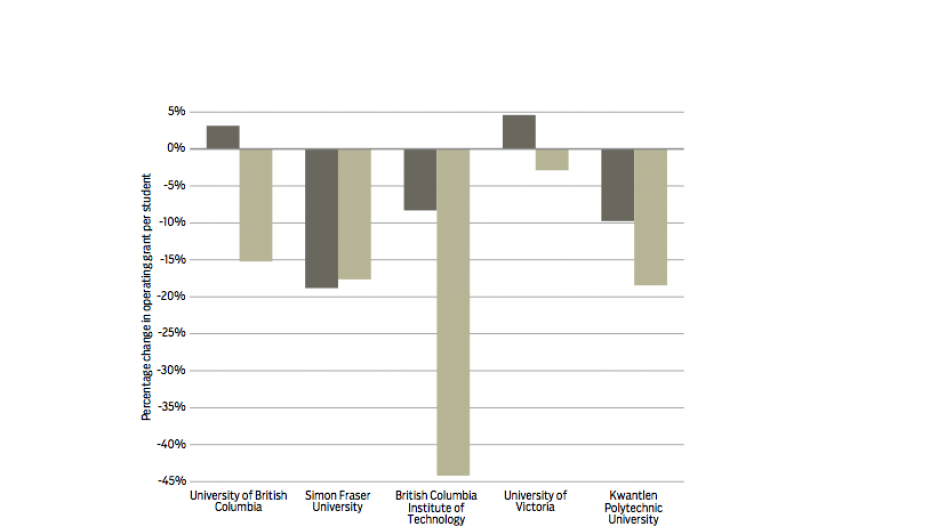Student enrolment numbers are up, but provincial government operating grants are down at B.C.’s largest postsecondary institutions.
According to data collected forBusiness in Vancouver’s Biggest Post-Secondary Institutions in B.C. list (page 17), the average student count at the five largest institutions grew by 22% over the five-year period ending in 2018. During the same period, the average government operating grant fell by 4.5%.
The combination of rising student enrolment and falling operating grants caused the average per-student grant to drop by a significantly higher rate (30.8%) than the average government operating grant.
Of the top five largest postsecondary institutions, the BC Institute of Technology (BCIT) recorded the largest drop in operating grant per student. It fell 44.2% to $5,619 in 2018 from $10,068 in 2014. The decrease was fuelled largely by BCIT’s 61.4% increase in students to 21,519 in 2018 from 13,335 in 2014, the largest increase in the top five.
The school’s rapid student enrolment growth coupled with its 9.9% fall in operating grant resulted in the significant decrease in BCIT’s per-student operating grant.
Operating grants are provided by the provincial government through a combination of block funding and targeted funding for specific and prioritized education programs. The great amounts are usually negotiated with the individual institution according to the ministry.
Rising enrolment and falling operating grants resulted in lower per-student operating grants for most of the five largest institutions in 2018 and over the five-year period since 2014.
The two exceptions were the University of British Columbia (UBC) and the University of Victoria (UVic). Both reported a slight rebound in the ratio in 2018 after experiencing declines since 2014 because their 2018 operating grants increased proportionately more than their student enrolments.
UBC’s operating grant increased at twice the rate as its student population: up 6.7% to $634.6 million in 2018 from $594.9 million in 2017 compared with enrolment growth of 3.4% over the same period.
UVic had the largest one-year increase in per-student operating grants in the top five: up 4.6% to $11,643 in 2018 from $11,132 in 2017. UVic’s operating grant increased 4.7% over the year while its student population grew by only .08%.
Last year was the first in the last five years that UVic’s per-student operating grant surpassed that of UBC’s, a trend that continued in 2018.
UVic’s per-student operating grant this year was $471.50 more than UBC’s at $11,172, a dramatic change from five years ago when UBC’s per-student operating grant was $1,187 higher than UVic’s.




